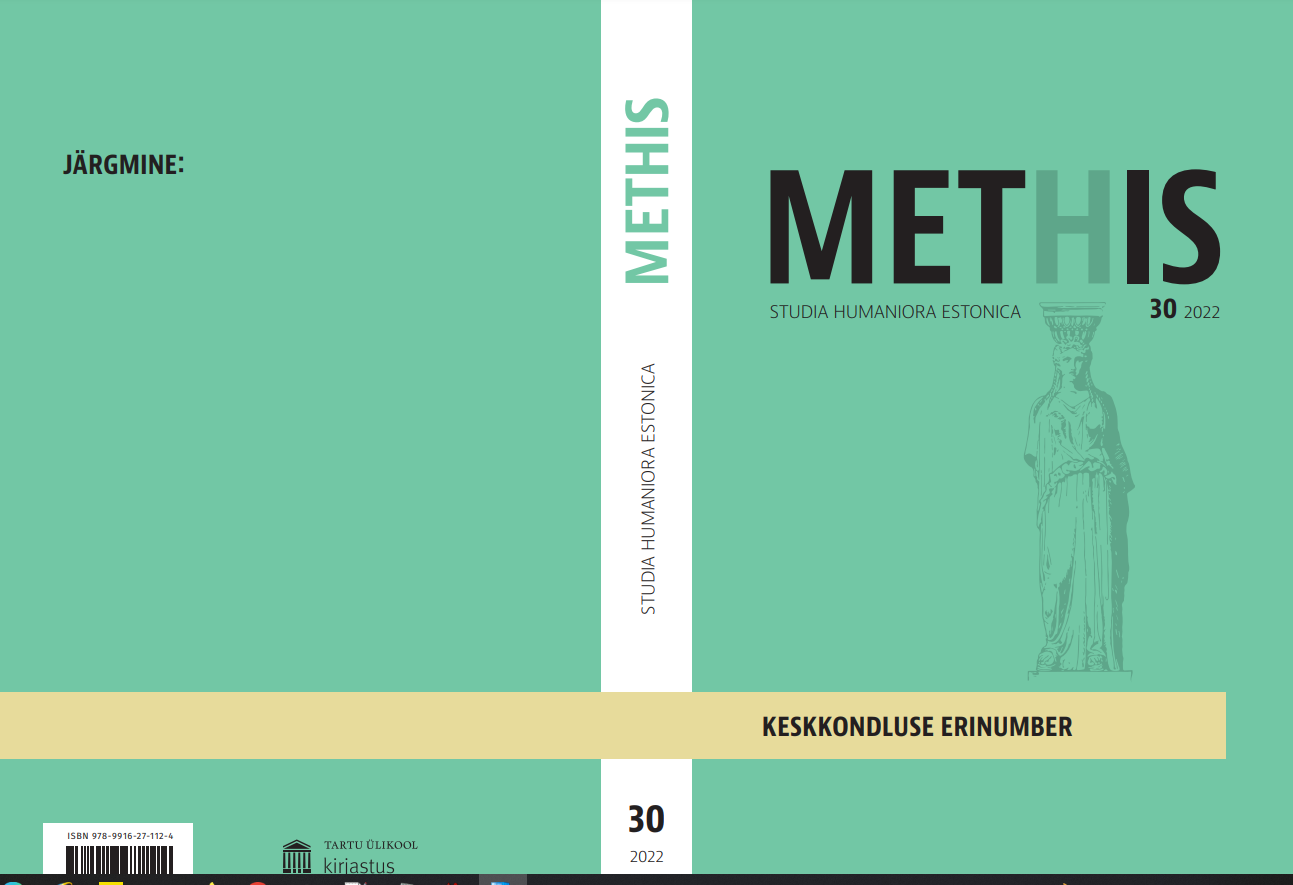Sõjakas kaitse – konfliktid loodus- ja kultuuripärandi hoiu kujundamisel / Warlike Protection – Conflicts in Shaping the Preservation of Natural and Cultural Heritage
DOI:
https://doi.org/10.7592/methis.v24i30.22112Keywords:
konflikt, looduslikud pühapaigad, metsasõda, keskkonnakommunikatsioon, konfliktoloogia, conflict, sacred natural sites, forest war, environment communication, confictologyAbstract
Artiklis uurime Eesti looduse ja kultuuri kaitsel tekkinud teravaid vastasseise, mida osalejad on mõnikord nimetanud sõdadeks. Näitejuhtumid ulatuvad pühapaikade kaitselt metsa ja linnalooduse kaitseni. Vaatleme artiklis, kuidas vastasseisud on arenenud, milliseid argumente kasutatakse ning millised konflikti osapooled neis eristuvad. Meie eesmärk ei ole otsida konfliktidele lahendusi või neid ennetada – selle asemel soovime mõista, miks mõnikord muutub looduse ja kultuuri kaitse sõjakat retoorikat kasutavaks konfliktiks.
Summary
This paper studies examples of the protection of natural or cultural objects in Estonia developing into sharp conflicts during the past couple of decades. Various mechanisms have been developed to avoid, prevent and solve conflicts, yet sharp oppositions still occur. Our aim is not to provide yet another methodology of conflict solving, but rather to look behind it: who participates in such conflicts, what their reasons and arguments are, what kind of rhetoric they use. Such an approach proceeds from Juri Lotman’s suggestion that it is not agreements, but contradictions that make a dialogue fruitful.
The case studies discussed in the paper range from folkloric sacred sites to the protection of forest and natural objects in urban environments. In all examples, we could observe the presence of two parties that we call the ‘developers’ and the ‘protectors’. In all cases, the developers found themselves in the middle of a conflict they had not foreseen and could not handle, as their only purpose was to develop the initial project, be it a building, forest clearing or the like. In terms of conflict management, ‘developers’ have always been followers of the conflict, reacting to it, but not leading it. The other side, ‘protectors’, consists of an amorphous group of people, some of whom are local inhabitants, while others participate in the protection because of their world view, moral or ideological reasons. In all cases observed it is the ‘protectors’ who lead it to a conflict – mostly as they are un-institutionalised, and thus less visible, so in order to become an equal partner and force developers into a discussion, they use conflict rhetoric and methods. Conflicts are usually expanded in public and on social media in the form of short and easy-to-read messages. Mediatisation is the main characteristic of contemporary conflicts and is adopted by both sides.
Our cases demonstrate that a clear and uniform narrative is important in order to control a conflict and make the other side accept it. Protection of folkloristic sacred sites has been guided by Maavalla Koda, a representative body of a leading contemporary pagan organisation in Estonia. Likewise, protecting forests from clearcutting has been directed by grass-root organisations. In the case of the folkloric sacred sites, the protectors have been successful and the developments have been stopped in almost all cases. Avoiding forest clearcutting has not been so unambiguously successful, but the aggressive rhetoric and active public campaigns have certainly influenced the public opinion in Estonia. Other cases, in which there have been no organisations in the background and that have lacked a common narrative, e.g. protecting a white willow in Tallinn’s suburb of Haabersti, have not been successful. Due to the missing common narrative and lack of a leader, several persons or groups were trying to act as leaders and distribute their message, which ended with a mixture of dissimilar statements, which eventually led to the protectors losing their credibility.
The core of such conflicts lies in a collision of different worldviews, characterised by opposing rhetoric, in which one party is using economical reasoning, while the arguments of the other are based on nature conservation, protecting of cultural and national values, and mixed with spiritual claims. Such different standpoints lead any discussion into a situation of opposition in which a compromise and solutions are difficult or even impossible to find. However, in Metsapoole the local dwellers, who acted against the State Forest Management Centre, deliberately excluded any spiritual arguments. Choosing rational rhetoric let them speak the same “language” as the Forest Management authorities and the conflict ended with a reappraisal of the plans of the State Forest Management Centre.
There certainly are multiple reasons why conflicts arise in protecting natural and cultural objects. In addition to differences in world views, the effects of NIMBY attitudes or personal disagreements are obvious. Still, often the cases follow a similar pattern in which the conflict is brought to the public and is guided by social media and media rules. In this process, emotional arguments become more important than rational ones, which deepens the gap between the two sides involved in the conflict.


